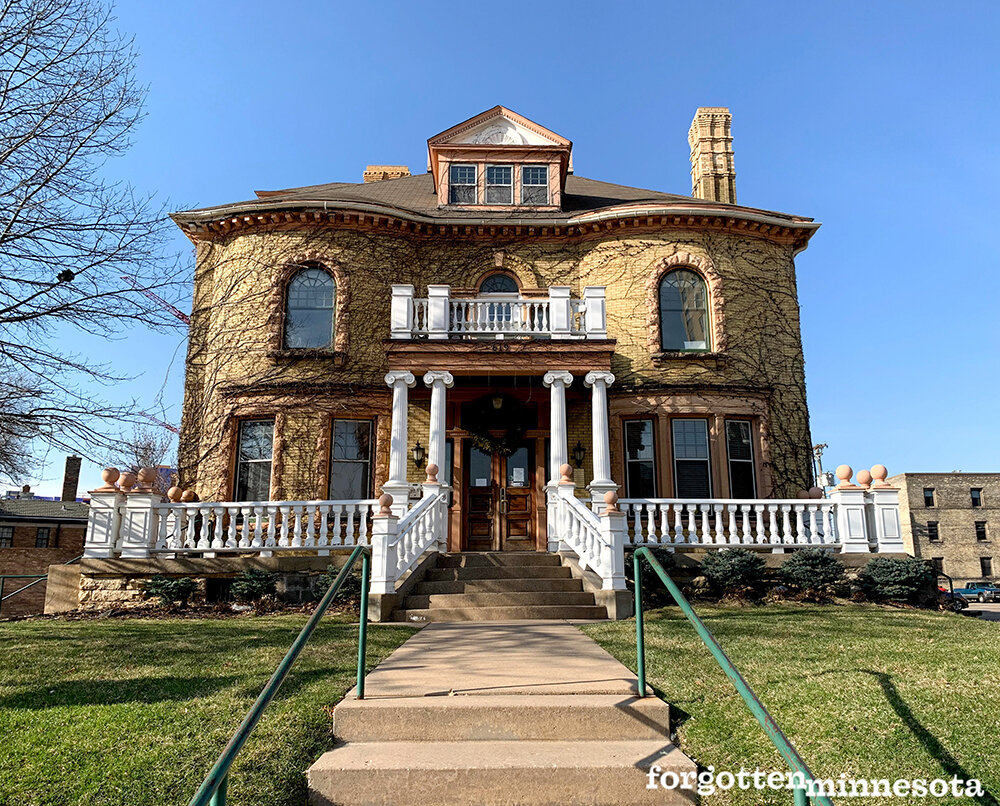The William Hinkle House in Minneapolis
William Hinkle came to Minneapolis in 1877 after graduating from Yale University. He established the firm of Hinkle, Greenleaf, and Company and started the Holly Flour Mills. He was also the secretary and treasurer of the Ashland Iron and Steel Company in Wisconsin. These ventures were both very successful and Hinkle became known as a mover and shaker in Minneapolis society.




In 1886, William Channing Whitney designed a home for Hinkle in the Georgian Revival style, making it the first of that style in Minneapolis. When Hinkle moved into the house in 1887, his was just one of more than 20 mansions that dominated Tenth Street S. The neighborhood was filled with names we recognize from the milling industry–George Pillsbury had a mansion on the block, as did his sons Charles and Frederick, and John Crosby lived across the street.
The yellow pressed-brick exterior of the home is nearly symmetrical and gives it a classic feel. The double bowed facade is a nod to Whitney’s formative years in Boston. Whitney continued the warm yellow tones of the exterior on the inside with a splash of amber marble flooring along the central hall. Just inside, sitting rooms were located on both sides of the corridor. Moving toward the rear of the home, a sitting room, dining room, kitchen, and service hall came in succession.





Hinkle’s home wasn’t filled with dark wood paneling or ornate murals, instead, it was decorated simply and classically. Nonetheless, the special pieces in the home were created by master artisans at the pinnacle of their career–a carved newel post for the main stairway, a plaster frieze in the dining room, and several marble fireplaces are among the most cherished decorative pieces in the home.
William Murphy purchased the house from Hinkle in 1901. Murphy solidified his status in Minneapolis when he bought the Minneapolis Tribune in 1891 as the newspaper was near collapse. His keen financial management turned the Tribune into a successful enterprise. Murphy contracted Spanish Influenza on a business trip to Chicago and died suddenly in 1918. The house remained in the Murphy family until 1939. Today, the house is the only remnant of the lavish neighborhood that once surrounded it. A law firm currently uses the house for offices.
